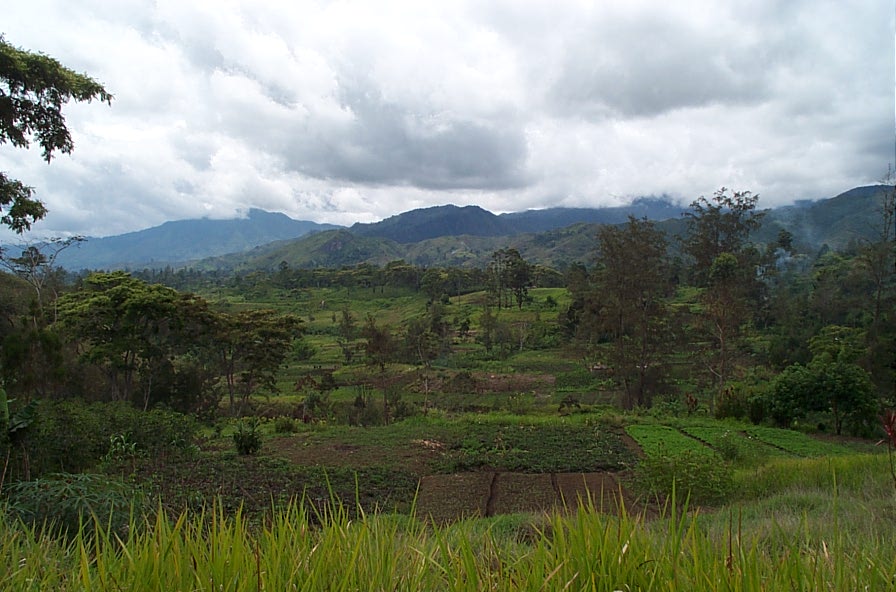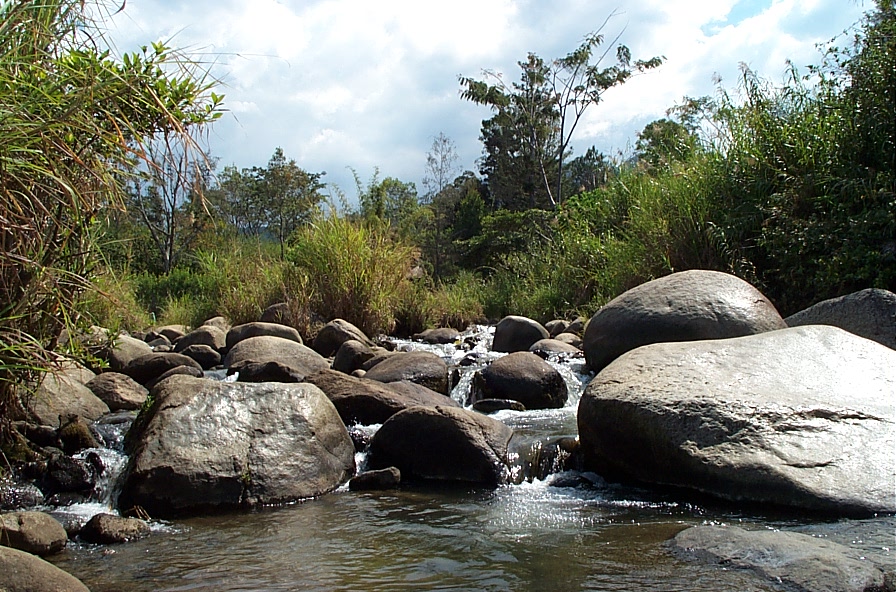
The village I have returned to several times beginning in 1998, Pikosa, seems idyllic, but not because it is quaint or edenic. It is nestled at the base of towering blue mountains, next to a river named Rambanunga, a tributary of the Asaro that eventually joins the waters of the Wahgi, Tua, and Bena rivers as they wind toward the great Purari and thus to the Coral Sea, far to the south. Rambanunga is a small river full of big smooth rocks and deep pools for swimming and fishing – small, but it can become quite rapid with heavy rains, sometimes even impassable, and villagers call their pigs home during such storms for fear that they will be swept away in a rapid current.

People bathe in the river and wash their clothes there, so it has designated areas for men to use and those for women. Men and boys bathe upstream from women and girls, preserving a chaste and non-pollutive separation of the sexes. Rambanunga’s waters are quite frigid, and though Pikosans find the cold water refreshing, I found it bracing as I shivered through Sunday morning (pre-church) baths to the laughter of those bathing with me. There are spits of gravel and sand that interrupt Rambanunga’s flow, and one of these is a recreational spot for the men of the village. They gather there on occasion to stage small afternoon feasts, washing themselves and their clothes, gambling at cards, sunning themselves on huge stones, smoking marijuana and cigarettes. They call it – in English – “naked beach.”
The Asaro Valley was where the first great ethnographer of highland New Guinea did his research — Kenneth Read. More than a few ‘classics’ (either essays or books) have been sited there or very close by, including Finney’s Bigmen and Business and Lorraine Sexton’s Mothers of Money, Daughters of Coffee. (Sexton’s work on women’s agency subsequently became an important ethnographic counternote to Read’s emphasis on male solidarity, and figured prominently in Marilyn Strathern’s later critique of Durkheimian paradigms as applied to Melanesian sociality.) The legendary planter and kiap Ian Downs lived in the valley for many years. Folks like Paige West and Pascale Bonnemère pass through on their way to their own Eastern Highlands fieldsites.
I go on about my fieldsite by way of celebrating the publication of my first essay based on fieldwork there. It appears in Sandra Bamford’s new edited volume, Embodying Modernity and Post-Modernity in Melanesia, which just came out. I now have that odd feeling of relative alienation from something I wrote years ago. The essay was an early formulation of some ideas I have about ‘modernity’ and ‘social change’ in Melanesia that I will be presenting here, I hope, in future posts.